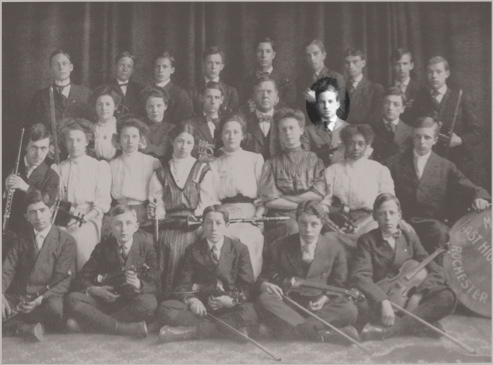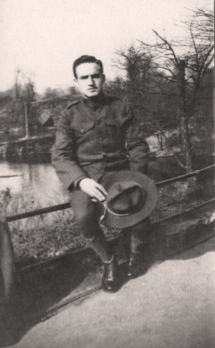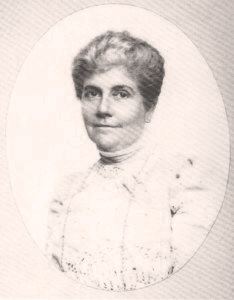It started with music ...
It started with music drifting out of a home on Prince Street in Rochester and a chance meeting that altered the path of David Hochstein’s life and the lives of thousands of people from our community who came after him.
David was born into a family with modest means. His parents, Jacob and Helena, met in this country after fleeing Czarist Russia. Both had a great passion for the arts, but struggled to find work in Rochester. To get by, they not only started their family, but a small printing business in their house on Joseph Avenue.
Jacob, an educated man who could read, write, and speak six languages, purchased a violin for David's fifth birthday and began teaching him. By the age of 8, David’s violin skills surpassed those of his father and he began studying with one of the region’s most respected musicians – Herr Ludwig Schenk.


While performing in the East High orchestra, David became friends with John Adams Warner, a talented pianist and the son of a renowned architect.
While practicing together at John’s Prince Street home, his neighbor, Emily Sibley Watson, heard David play through an open window while she walked by. Emily, a local arts patron, immediately became interested in learning more about this young talent. She soon became instrumental in furthering David’s musical career by ensuring he received a world-class music education.

With Emily Sibley Watson's patronage, David studied under Ottakar Sevcik in Vienna and graduated from the Meisterschule with highest honors, becoming the first American to win triple prizes offered by this institution, and the first student ever to win both the One Thousand Crown and First State Prize.
He continued his studies in St. Petersburg, Russia, with Leopold Auer, considered to be the finest violinist of the time. His stay in Russia was financed by George Eastman, friend of Mrs. Watson and founder of Kodak. Eastman later purchased two violins "for the use of David Hochstein" – a 1735 Carlo Landolphi and a 1715 Stradivarius, both of which were returned to Eastman upon Hochstein’s death.
After learning from the masters in Europe, David made his Carnegie Hall debut and performed as soloist with the New York Philharmonic Orchestra and Metropolitan Opera. A sought-after artist, he performed in Boston, Chicago, and throughout the U.S., as well as in London, Berlin, Dresden, and other European cities, all to rave reviews. He also composed four pieces published by noted New York publisher Carl Fisher.
In addition to enjoying worldwide acclaim for his performances, David supported his widowed mother by providing music lessons to individuals in our community. He was eager to share his talent with other young musicians, always remembering the support he received from Emily Sibley Watson and her friend George Eastman.

In 1917, David enlisted in the army during World War I and is assigned to the Infantry Division. After a year, he began pressing to go to the front line. In his last letter to his mother he wrote, “But remember, I count on you to be in tune with me. I lean on you as much as you on me. So be brave and very, very strong.” Soon after going to the front line, Second Lieutenant David Hochstein, at the age of 26, was tragically killed in the Battle of Argonne in October 1918.
It took months for the news to finally be confirmed that David was gone. The Rochester community mourned his loss and no one felt it more than his mother and Emily Sibley Watson.
 Emily led the charge to rally the community around creating a school to honor David’s dream of providing music education, regardless of an individual's means. The community joined in and a benefit concert was held to memorialize David. The funds raised helped create the David Hochstein Memorial Music School in 1920 and lessons began where the Hochstein family lived on Joseph Avenue on January 2, 1920.
Emily led the charge to rally the community around creating a school to honor David’s dream of providing music education, regardless of an individual's means. The community joined in and a benefit concert was held to memorialize David. The funds raised helped create the David Hochstein Memorial Music School in 1920 and lessons began where the Hochstein family lived on Joseph Avenue on January 2, 1920.
Those who helped create the school already knew that music mattered, and that making music mattered more. They saw that the brief, yet talented life of David Hochstein could live on, thus creating a legacy that we continue to nurture 100 years later. With the efforts of many who believe in our mission, more than a hundred thousand lives have been positively impacted over the last century at The Hochstein School.